

The European Conference on Software Architecture (ECSA) is the premier European software architecture conference, providing researchers, practitioners, and educators with a platform to present and discuss the most recent, innovative and significant findings and experiences in the field of software architecture research and practice. The conference will feature a research track, an industrial track, keynotes, workshops, tutorials, tool demonstrations, and panels.
The submissions should be prepared using the Springer LNCS style and submitted via EasyChair here.
ECSA 2016 will be held in the University of Copenhagen, Copenhagen, Denmark, from November 28th to December 2nd, 2016.
Proceedings are available at Springer: https://link.springer.com/book/10.1007%2F978-3-319-48992-6
Gold Sponsor:

Microsoft Development Center Copenhagen, Denmark
Research Track Paper Session 1: Software Architecture Quality and Design Reasoning
Software Architecture Design Reasoning: A Card Game to Help Novice Designers
Courtney Schriek, Jan Martijn Van Der Werf, Antony Tang and Floris Bex
A Long Way to Quality-Driven Pattern-Based Architecting
Gianantonio Me, Coral Calero and Patricia Lago
Diversifying Software Architecture for Sustainability: A Value-based Perspective
Dalia Sobhy, Rami Bahsoon, Leandro Minku and Rick Kazman
Research Track Paper Session 2: Software Architecture Reconstruction
Materializing Architecture Recovered from OO Source Code in Component-Based Languages
Zakarea Alshara, Abdelhak-Djamel Seriai, Chouki Tibermacine, Hinde Lilia Bouziane, Christophe Dony and Anas Shatnawi
SeaClouds: An Open Reference Architecture for Multi-Cloud Governance
Antonio Brogi, Jose Carrasco, Javier Cubo, Francesco D’Andria, Elisabetta Di Nitto, Diego Perez, Ernesto Pimentel, and Jacopo Soldani
Using Hypergraph Clustering for Software Architecture Reconstruction of Data-Tier Software
Ersin Ersoy, Kamer Kaya, Metin Altinisik and Hasan Sözer
Research Track Paper Session 3: Runtime Architecture
Architectural Homeostasis in Self-Adaptive Software-Intensive Cyber-Physical Systems
Ilias Gerostathopoulos, Dominik Skoda, Frantisek Plasil, Tomas Bures and Alessia Knauss
Executing Software Architecture Descriptions with SysADL
Flavio Oquendo, Jair Leite and Thais Batista
Towards an architecture for an UI-Compositor for Multi-OS environments
Tobias Holstein and Joachim Wietzke
Research Track Paper Session 4: Software Architecture Evolution
Inferring Architectural Evolution from Source Code Analysis
Christel Kapto Djampou, Ghizlane El Boussaidi, Sègla Kpodjedo and Chouki Tibermacine
Evolution style: framework for modeling dynamic evolution of real-time software architecture
Adel Hassan, Audrey Queudet and Mourad Oussalah
Retrofitting Controlled Dynamic Reconfiguration into the Architecture Description Language MontiArcAutomaton
Robert Heim, Oliver Kautz, Jan Oliver Ringert, Bernhard Rumpe and Andreas Wortmann
Research Track Paper Session 5: Verification and Consistency Management
Statistical Model Checking of Dynamic Software Architectures
Everton Cavalcante, Jean Quilbeuf, Louis-Marie Traonouez, Flavio Oquendo, Thais Batista and Axel Legay
Consistent Inconsistency Management: a Concern-Driven Approach
Jasper Schenkhuizen, Jan Martijn Van Der Werf, Slinger Jansen and Lambert Caljouw
Formal Verification of Software-intensive Systems Architectures described with Piping and Instrumentation Diagrams
Soraya Mesli-Kesraoui, Djamal Kesraoui, Flavio Oquendo, Alain Bignon, Armand Toguyeni and Pascal Berruet
Research Track Paper Session 6: The Software Architect's Role and Concerns
Architects in Scrum: What Challenges Do They Face?
Samuil Angelov, Marcel Meesters and Matthias Galster
An Empirical Study on Collaborative Architecture Decision Making in Software Teams
Sandun Dasanayake, Jouni Markkula, Sanja Aaramaa and Markku Oivo
Architecture Enforcement Concerns and Activities - An Expert Study
Sandra Schröder, Matthias Riebisch and Mohamed Soliman
Research Track Paper Session 7: Software Architectures for Web and Mobile Systems
The Disappearance of Technical Specifications in Web and Mobile Applications
Theo Theunissen and Uwe van Heesch
Architecture Modeling and Analysis of Security in Android Systems
Bradley Schmerl, Jeff Gennari, Alireza Sadeghi, Hamid Bagheri, Sam Malek, Javier Cámara and David Garlan
Towards a framework for building SaaS applications operating in diverse and dynamic environments
Ashish Agrawal and Prabhakar Tadinada
Research Track Paper Session 8: Software Architecture Documentation
Towards Seamless Analysis of Software Interoperability: Automatic Identification of Conceptual Constraints in API Documentation
Hadil Abukwaik, Mohammed Abujayyab and Dieter Rombach
Design Decision Documentation: A Literature Overview
Zoya Alexeeva, Diego Pérez-Palacin and Raffaela Mirandola
Task-Specific Architecture Documentation for Developers - Why Separation of Concerns in Architecture Documentation is Counterproductive for Developers
Dominik Rost and Matthias Naab
The program for the 10th European Conference on Software Architecture - ECSA'16 - Copenhagen can be downloaded here.
For celebrating the 10th ECSA Anniversary, a special session will be held on Friday, 2 December 2016, where the Program Committee Chairs of the first 10 ECSAs will present their vision of the Future of Software Architecture regarding the next 10 years.
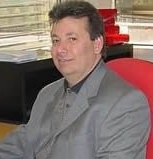 Title: The Future of Software Architecture for Software-intensive Systems-of-Systems
Title: The Future of Software Architecture for Software-intensive Systems-of-Systems
URL: http://people.irisa.fr/Flavio.Oquendo/
Abstract:The complexity of software and the complexity of systems reliant on software have grown at a staggering rate. In particular, the pervasiveness of the networks increasingly has made possible to interconnect software-intensive systems that were independently developed, operated, managed, and evolved, yielding a new kind of complex system, i.e. a system that is itself composed of systems, the so-called System-of-Systems (SoS). By its very nature, SoS is evolutionarily developed and exhibits emergent behavior. This is the case of SoS found in different areas as diverse as aeronautics, automotive, energy, healthcare, manufacturing, and transportation; and application domains that address societal needs as e.g. environmental monitoring, emergency coordination, traffic control, smart grids, and smart cities. This talk presents the challenges facing software architecture research to address software-intensive systems-of-systems. We will discuss the discriminating characteristics of system-of-systems when compared with single (even very large) systems from the software architecture perspective. Specifically, we will analyze why novel architectural solutions are needed to handle the complexity of software-intensive systems-of-systems in particular regarding the architectural challenges implied by evolutionary development and emergent behavior. Finally, we will survey recent advances in software architecture research to formally describe the architecture of software-intensive systems-of-systems. We will conclude by identifying different research roadmaps and pinpointing upcoming international initiatives on software-intensive systems-of-systems.
 Title: The Future of Architecture Design Spaces for Supporting Emerging Trends and Technologies
Title: The Future of Architecture Design Spaces for Supporting Emerging Trends and Technologies
URL: https://malibabar.wordpress.com/about/
Abstract:
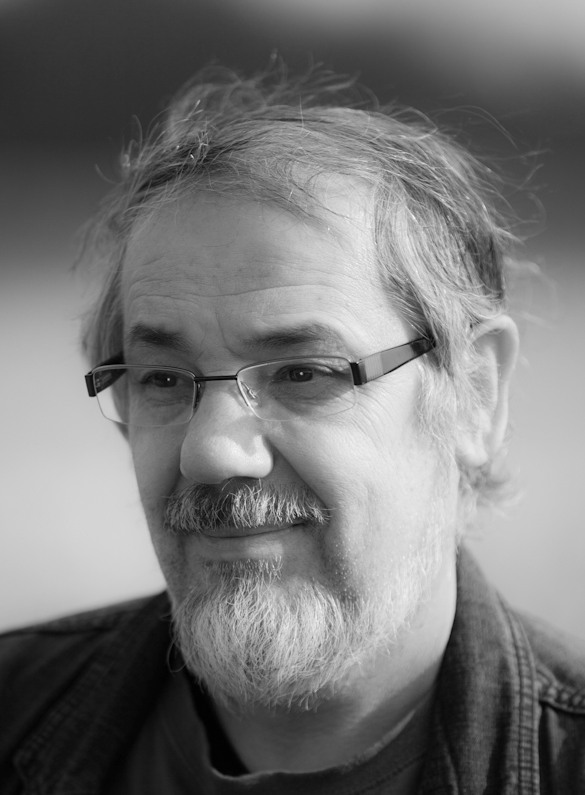 Title: The Future of Software Architecture for Cyber Physical Systems
Title: The Future of Software Architecture for Cyber Physical Systems
URL: http://www.chalmers.se/en/Staff/Pages/crnkovic.aspx
Abstract: Cyber-physical systems are characterized as distributed systems consisting of physical units mutually interacting. While the physical characteristics, as well as the communication between the units, are of the most importance, software is controlling the entire system, and by this it becomes the most important part. Software Architecture for these systems is tightly connected with, and determined by the physical/topological structure. However, the utilization of new computational units with enormous capacity of parallel computing and processing large amounts of data, and high availability of external resources in form or cloud-computing, dramatically increase the possibility of new functions and capacities of such systems. This however also introduces new challenges often related to a combination of security, safety, privacy, reliability, integrity, and performance. How should Software Architecture, that should incorporate mechanisms that can provide solutions that meet these challenges, be designed? What will be the main concerns for such architectures, and how will these architectures evolve to meet these challenges, and continuously changing the context in which these systems perform?
In this talk we will present the basic principles of software architecture for cyber-physical systems, the software architecture evolution in the past and today, and what we can expect in the nearest future.
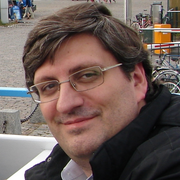 Title: The Future of Evolving Software Architecture: From Streams to Microservices
Title: The Future of Evolving Software Architecture: From Streams to Microservices
URL: URL: http://cecuesta.tk/
Coauthors:
Paloma Caceres, Rey Juan Carlos University. (http://pcaceres.ml)
Belen Vela, Rey Juan Carlos University. (http://bvela.ml)
Abstract: During the last decade, software architectures have remained relatively stable. Mainstream software development has been following a set of well-known architectural patterns, reflecting the use of established technologies. However, the technological landscape has radically changed. The widespread adoption of cloud computing has changed the runtime context; the pervasiveness of mobile applications implies their distributed nature; and the impending Internet of Things is already reinforcing both trends. The need for scalability has brought along a new emphasis on virtualization. Software already runs regularly within containers, which are now deployed and managed in distributed clusters. Simultaneously, the volume and velocity of the information to be processed has increased exponentially, leading on to a new generation of data architectures, capable to deal with so-called Big Data and Fast Data. Not to mention the current complexity and sophistication of cybersecurity issues, or the new roles being assumed by artificial intelligence.
In summary, evolving architectures are not the exception anymore, but they are becoming the rule. New abstractions are already beginning to appear. Concurrency is now a standard feature, and new mechanisms are being designed to deal with it. The concept of reactive streams is a high-level abstraction, with many architectural implications. Modularization has also evolved, and most of the current trends have crystallized in the notion of microservices. These containerized, independent, distributed components are now thriving; the resulting panorama is transforming architectures into event-driven, self-adaptive systems. Software architecture research is still starting to reflect those changes; but it is bound to play a key role in this evolution.
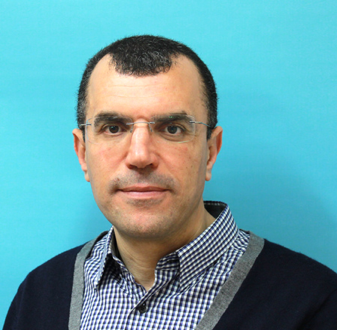 Title: The Future of Dynamic Software Architecture in Communicating Systems
Title: The Future of Dynamic Software Architecture in Communicating Systems
URL: http://homepages.laas.fr/khalil
Abstract: The design approaches of Communicating Systems are moving from static to dynamic layered and loosely coupled architectures to meet the adaptability needs of future distributed computing and storage systems and the associated networked services and applications. The decoupling of network functions, the software-based abstraction and virtualization of network resources and functions are being adopted at the different levels of interaction for proactively or reactively adapt the architecture to the evolving needs of the interconnected systems and their applications. Overlay networks and SDN (Software Defined Networks) are the most promising illustrative techniques towards this direction. New architectural advances are observed both for wired and wireless communication networks as well as Internet of Things and Machine-to-Machine communications. Both academic, industrial and standardization efforts are contributing towards the new direction of architecting future generation of communicating systems. The design of dynamic software architectures in communicating systems raises additional challenges. This includes the complexity and consistency management for the cross-layers and cross-nodes reconfiguration and requires vertical and horizontal coordination mechanisms for both the decision and the execution functions. Automated discovery and integration solutions have also to be developed for mastering the new complexity induced by the new loosely coupled design approaches and its extensive runtime exploitation for dynamic composition. Moreover the cognitive and autonomic approaches have to be more explored to improve the management of the future generation of communicating systems. Future architectural approaches should benefit from the recent advances in software engineering including the microservices design patterns and from cognitive and autonomic computing.
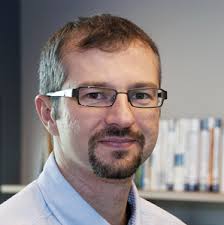 Title: The Future of Architecture Technical Debt Management
Title: The Future of Architecture Technical Debt Management
URL: http://www.cs.rug.nl/~paris/
Abstract: The term Technical Debt has become rather popular over the past years, expressing technical compromises that can yield short-term benefits but may hurt the long-term health of a software system. Technical Debt as a metaphor resonates well with technical and non-technical stakeholders and can potentially act as a bridge between them and facilitate communication and negotiation. However, a perfect storm is brewing: Technical Debt is dangerously accumulating in most, if not all, large systems, threatening to “bankrupt” those systems if it is not actively managed. Particularly, emphasis should be given on managing Technical Debt at the architecture level: the most important (and difficult) type of Technical Debt. Paradoxically we have traditionally studied Technical Debt management at the source code level and not the architecture. The future of Technical Debt Management lies in identifying, measuring, prioritizing and repaying Architecture Technical Debt, with the ultimate goal of supporting architects in making sound architectural investments to balance short- and long-term goals.
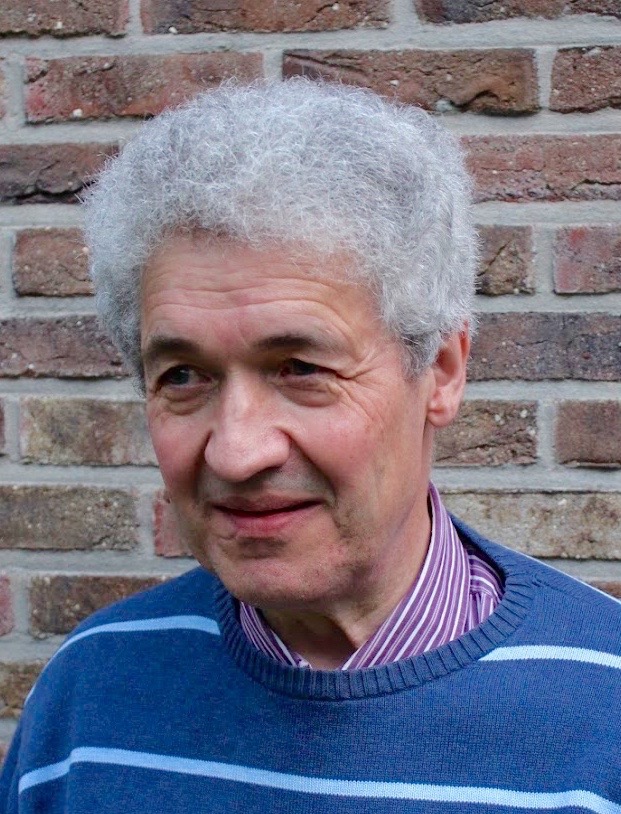
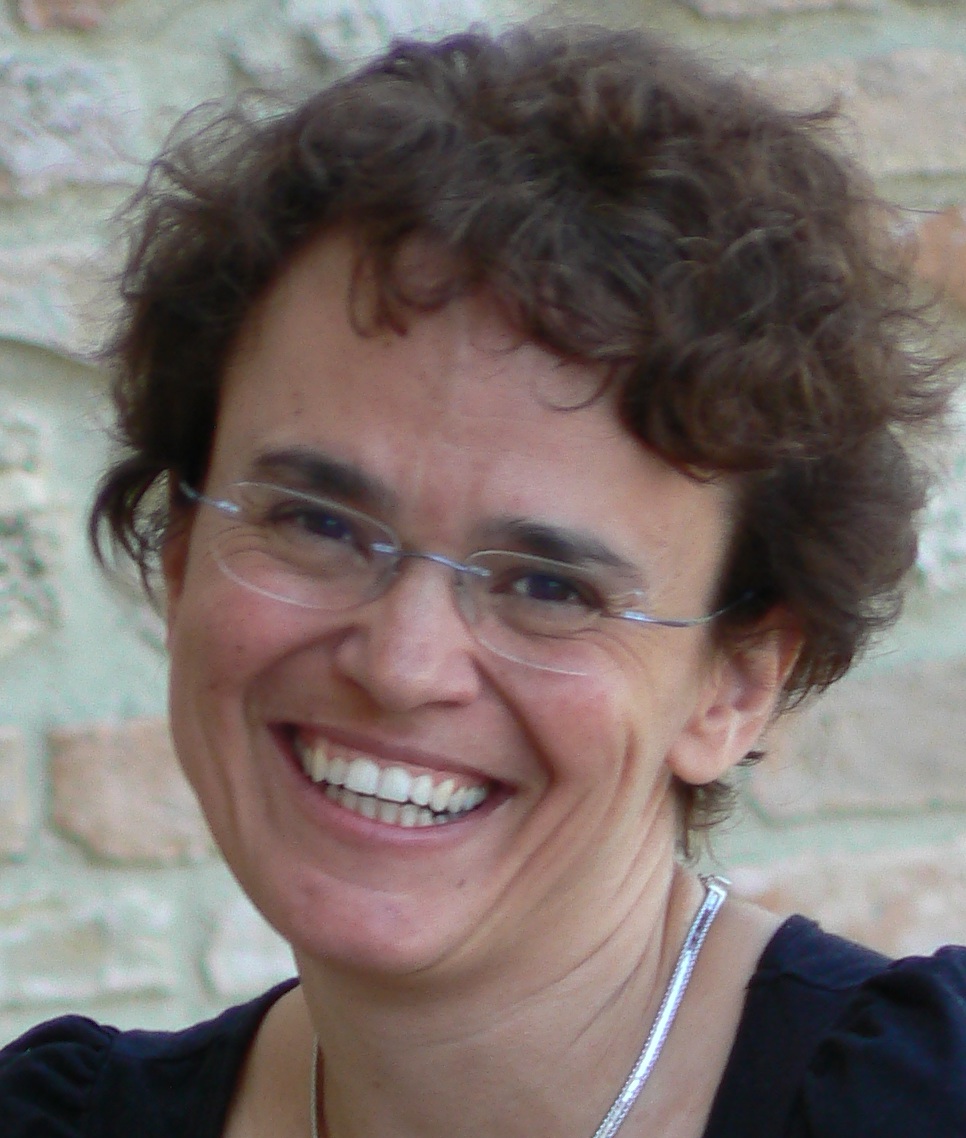 Title: The Future of Software Architecture: Software Architecture as a Fluid Backbone of Computing Systems
Title: The Future of Software Architecture: Software Architecture as a Fluid Backbone of Computing Systems
URL: https://people.cs.kuleuven.be/~danny.weyns/
http://home.deib.polimi.it/mirandola/
Abstract: In the past two decades, the understanding of what comprises software architecture has gone through two principle waves: the first wave put the emphasis of software architecture on the fundamental structures of a software system; the second way put the emphasis on software architecture as a set of design decisions. In this talk, we argue that these perspectives are not sufficient for the upcoming generation of software intensive systems that converge to dynamic ecosystems of potentially large numbers of entities that operate in uncertain environments. The software architecture of such systems becomes a fluid backbone of which the structures dynamically shape and reshape themselves driven by decisions made by men and machines to realise the dynamic goals of the system in a continuously evolving context.
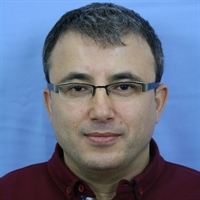 Title: The Future of Model-Driven Software Architecture Design
Title: The Future of Model-Driven Software Architecture Design
URL: http://wageningenur.nl/inf
Abstract: Historically, the search for proper modeling abstractions have had a long tradition in software engineering to support the communication among stakeholders, the analysis of the system, and the overall guidance of the development process. In the last decades, we have experienced how modeling of software architecture has evolved from informal descriptions to more precise and detailed blueprint approaches, which has finally culminated to the adoption of executable models that can be interpreted and processed by model compilers. A further important evolution dimension has been the introduction of multiple coherent set of architecture viewpoints to address the different stakeholder concerns. We can state that, more than ever, the software architect is now better equipped with modeling abstractions to design the software architecture that meets the stakeholder concerns. Yet, with the high pace of developments in software and information technology, the corresponding massive digitalization, and the enhanced scale and scope of software-intensive systems we are now facing novel foreseen and unforeseen challenges that require an enhanced vision on the current architecture design approaches. In this paper, we will present the existing and forthcoming key challenges, the impact of these challenges on architecture design abstractions, and the possible solution directions for coping with these challenges to design the future architectures of software-intensive systems.
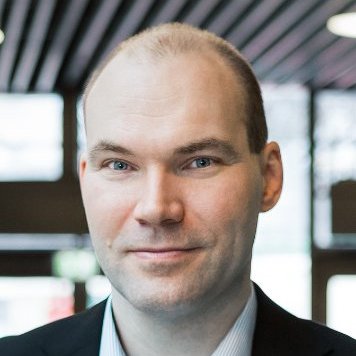 Title: The Future of Architecting and Architecture Decision Making in the Context of the Software Engineering Lifecycle
Title: The Future of Architecting and Architecture Decision Making in the Context of the Software Engineering Lifecycle
URL: https://cs.univie.ac.at/Uwe.Zdun
Coauthors:
Cesare Pautasso, University of Lugano ( http://www.pautasso.info/)
Olaf Zimmermann, HSR Hochschule für Technik Rapperswil (https://www.ifs.hsr.ch/Olaf-Zimmermann.11623.0.html)
Abstract: Architectural Decisions (ADs) have been recently growing in importance in the field of software architecture as the main abstraction to represent architectural knowledge. The talk revolves around the analysis of architectural decisions in the context of the entire software engineering lifecycle, which we believe to be a core topic for the future of architecture decision making. In particular, lean principles and agile practices have become increasingly popular in industry in the last decade. As software projects adopt these methods and practices, the role of the architect evolves, as well as the notion of architectural decision making. We will discuss the implications for the interplay of architecting processes and the artifacts created during and related to architecting.
The role of women in the Computing area has gained more and more importance with the emerging information age. In this scenario, the first special track on “Women in Software Architecture” collocated to ECSA 2016 will bring together students, young and senior researchers, as well as practitioners to present, share, and celebrate their technical accomplishments and experiences making research and/or working in the Software Architecture field. There will be a mix of technical presentations and a panel to discuss about current and future issues in the field by leading experts from industry and academia. It is a pleasure to invite you to this first special track of “Women in Software Architecture”.
Both women and men are invited to collaborate and attend to this track. It will be welcome students, industry professionals, academics, and other leaders in computing to promote networking and technical discussion to motivate the participation and visibility of women in the Software Architecture field.
We are looking for your contributions in two categories:
* Summaries, challenges, and studies regarding the role of women in Software Architecture (up to 4 pages)
* Technical papers about Software Architecture that have been conducted or supervised by women (up to 8 pages)
All contributions will undergo a peer-review process. The accepted papers will be included in the ECSA 2016 companion volume to be published by ACM. For this, Camera Ready must be formatted according to the ACM SIG Proceedings Template
Submission deadline: September 07, 2016 (Wednesday)
Notification: September 21, 2016 (Wednesday)
Camera-ready due: September 28, 2016 (Wednesday)
Women presenting their work in this special track could have a special discount in the ECSA 2016 registration.
Submissions of papers for Women in Software Architecture track must:
* Have a maximum length of 4 pages (Role of women in Software Architecture) or 8 pages (Technical papers)
* State clearly the category: Role of women in Software Architecture or Technical paper.
Submissions for this track will be accepted via email: elisa@icmc.usp.br and Elena.Navarro@uclm.es
Anna Liu, NICTA/UNSW, Australia
Carlos E. Cuesta, Universidad Rey Juan Carlos
Claudia Raibulet, Universita' degli Studi di Milano-Bicocca
Claudia Werner, Federal University of Rio de Janeiro
Danny Weyns, Linnaeus University
David Garlan, Carnegie Mellon University
Flabia Delicato, Federal University of Rio de Janeiro
Flavio Oquendo, IRISA (UMR CNRS) - Univ. Bretagne-Sud (UBS)
Jennifer Pérez, Technical University of Madrid
Jenny Liu, Concordia University
Khalil Drira, LAAS-CNRS
Matthias Galster, University of Canterbury
Natsuko Noda, Shibaura Institute of Technology
Patricia Lago, VU University Amsterdam
Rafael Capilla, Universidad Rey Juan Carlos
Rafaella Mirandola, Politecnico di Milano
Rodrigo Santos, UNIRIO
Xiwei Xu, Architecture and Analytics Platform (AAP)
Metamodeling of Reference Software Architecture and Automatic Code Generation
Nafiye Kübra Turhan, Middle East Technical University, Ankara, Turkey
Halit Oguztüzün, Middle East Technical University, Ankara, Turkey
Research Contributions on Adaptive Software Architectures: A Brazilian female perspective at UNICAMP
Sheila K. Venero, University of Campinas, Brazil
Jane D. A. S. Eleutério Federal University of Mato Grosso do Sul, Brazil
Cecília M. F. Rubira, University of Campinas, Brazil
Conceptualizing a Framework for Cyber-Physical Systems
of Systems Development and Deployment
Jessica Díaz, Universidad Politécnica de Madrid (Technical University of Madrid, UPM)
Jennifer Pérez Universidad Politécnica de Madrid (Technical University of Madrid, UPM)
Jorge Pérez, Universidad Politécnica de Madrid (Technical University of Madrid, UPM)
Juan Garbajosa, Universidad Politécnica de Madrid (Technical University of Madrid, UPM)
Tailoring Complexity Metrics for Simulink Models
Marta Olszewska, Åbo Akademi University, Turku, Finland
Yanja Dajsuren Centrum Wiskunde & Informatica, Amsterdam, The Netherlands
Harald Altinger, Graz University of Technology, Austria
Alexander Serebrenik, Eindhoven University of Technology, Eindhoven, The Netherlands
Marina Waldén, Åbo Akademi University, Turku, Finland
Mark G.J. van den Brand, Eindhoven University of Technology, Eindhoven, The Netherlands
Software Ecosystems Architectural Health: Challenges x Practices
Simone da Silva Amorim, Federal Institute of Education, Science and Technology of Bahia, Salvador, BA Brazil
John D. McGregor, School of Computing Clemson University, Clemson, USA
Eduardo Santana de Almeida, Federal University of Bahia & Fraunhofer Project Center for Software and Systems Engineering, Salvador, BA Brazil
Christina von Flach G. Chavez, Federal University of Bahia, Salvador, BA Brazil
The program of the Track Women in Software Architecture can be downloaded here.
Papers of the Track Women in Software Architecture can be found here.
A series of workshops will be held in conjunction with ECSA 2016 to encourage the exchange of ideas and to discuss challenging research issues in software architecture. Papers accepted for the workshops will be published in the ACM Digital Library.
The ECSA architecture tool demonstrations track provides an opportunity for both practitioners and researchers to present and discuss the most recent advances, experiences, and challenges in the field of software architecture by means of live tool presentations. Motivated by big data, data science and high-scalability application challenges, software architects are constantly challenged to improve the observability of and manage certain architectural health characteristics of systems. Tool demo submissions addressing any aspect of tool support to help software architects can belong in two distinct categories:
• Tools used in practice, either from commercial vendors or open-source projects. These demonstrations should focus on practical applications within the different activities of software architecting and should particularly show how they advance the current state of the practice. New ideas and features are particularly welcome.
• Research tools from academic or industrial research environments. These demonstrations are intended to highlight underlying scientific contributions and show how scientific approaches have been transferred into a working tool.
Both categories may range from early prototypes to in-house or pre-commercialized products. Authors of regular ECSA research papers are also welcome to submit an accompanying tool paper and supplement additional information regarding the tool (such as multimedia, tool maturity) as described further under submission requirements.
Submissions of papers for architecture tool demonstrations must:
* Have a maximum length of 4 pages, describing the technology or approach, how it relates to other industrial or research efforts, including references, and what the expected benefits are.
* Have an appendix (not included in the page count) that provides a brief description of how the presentation will be conducted, information on tool availability, maturity and the web-page for the tool (if one exists).
* State clearly the tool category: in-practice or research. In-practice tool demonstrations should also state whether they opt to be considered for inclusion in the proceedings.
* Be accompanied by a video (with audio commentary) of maximum 5 minutes length and of high resolution (details of the tool’s functionality should be clearly visible). The video should be uploaded on a video server (e.g. youtube) and the link should be included in the submission.
Demo submission: June 10, 2016
Author notification: June 19, 2016
Camera ready: June 29, 2016
All deadlines are 23:59 Anywhere on Earth.
Program Chairs
Konstantinos Manikas, University of Copenhagen, Denmark
Liu Yan , Concordia University, Canada
Program Committee
Alexandros Chatzigeorgiou, University of Macedonia, Greece
Henry Muccini, University of L'Aquila, Italy
Jens Knodel, Fraunhofer IESE, Germany
Mehmet Aksit, University of Twente, The Netherlands
Paris Avgeriou, University of Groningen, The Netherlands
Rich Hilliard, IEE
Tomi Männistö, University of Helsinki, Finland
Qinghua Lu, NICTA, Australia
Zheng Li, Lund University, Sweden
SeaClouds: An Open Reference Architecture for Multi-Cloud Governance
Antonio Brogi, University of Pisa, Dept. Computer Science, Italy
Jose Carrasco, Universidad de Malaga, Dept. Lenguajes y Ciencias de la Computacion, Spain
Javier Cubo, Universidad de Malaga, Dept. Lenguajes y Ciencias de la Computacion, Spain
Francesco D’Andria, ATOS Research and Innovation, Spain
Elisabetta Di Nitto, Politecnico di Milano, Dip. di Elettronica, Informazione e Bioingegneria, Italy
Diego Perez, Politecnico di Milano, Dip. di Elettronica, Informazione e Bioingegneria, Italy
Ernesto Pimentel, Universidad de Malaga, Dept. Lenguajes y Ciencias de la Computacion, Spain
Jacopo Soldani, University of Pisa, Dept. Computer Science, Italy
For the Industry Track, we seek high-quality contributions from practitioners and as well as industrial and academic researchers describing methods, techniques, and practices as well as other results of direct relevance and applicability to practicing software architects. Contributions can take the form of extended abstracts or tutorials, that should focus on the practical lessons that can be drawn from the experience and encourage interactive discussion on the presented topic. In particular, we are looking for contributions:
*Giving concrete, well-reasoned and generally applicable guidance for certain architectural activities and decisions;
*Describing a new and useful tool, which is available for use, or
*Detailing architectural challenges not yet or not satisfactorily solved by research, including ideas how the effectivity of solutions could be measured, or
*Reporting on concrete, but generally relevant, problems and challenges from industrial projects and how they have been overcome.
Accepted extended abstracts will be given 30 minutes presentation slot during the industrial day. Accepted tutorials will be allocated 90 or 180 minutes slots for a detailed technical briefing on the chosen topic. All proposals for the industrial track must clearly state which problem the constribution addresses and how the recipient will be able to profit from the content.
* Extended Abstracts and tutorial proposals are due: October 28, 2016
* Notification to presenters: November 5, 2016
* Registration due: November 11, 2016
* Conference: November 28 – December 2, 2016
All submitted extended abstracts and tutorial proposals would be reviewed and selected for presentations by the industrial track co-chairs. The submissions can be made via email to either of the industrial track co-chairs by October 28, 2016.
Klaus Marius Hansen, Microsoft Development Center Copenhagen, Denmark
(klaus.marius.hansen@microsoft.com)
Mansooreh Zahedi, IT University of Copenhagen, Denmark
(mzah@itu.dk)
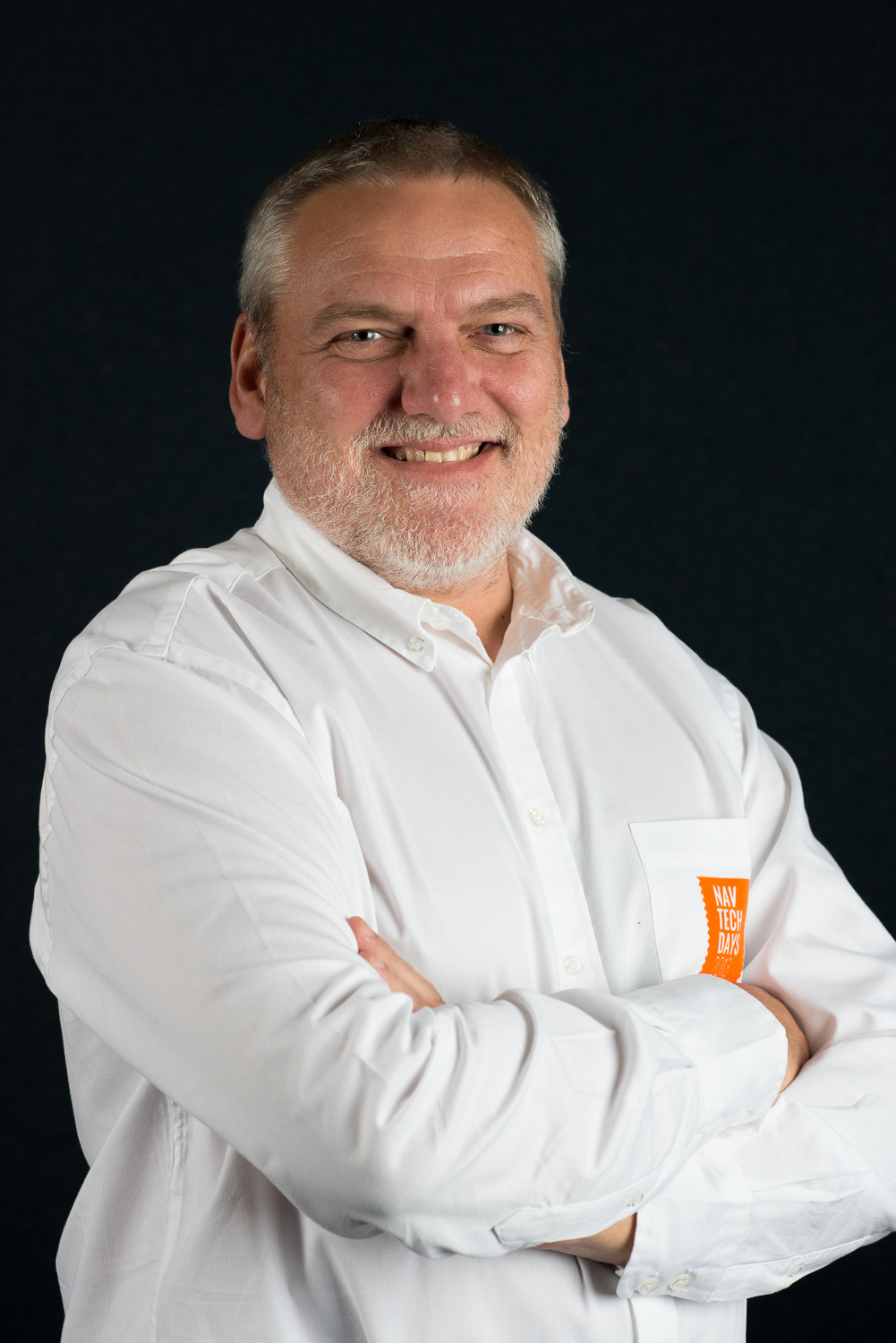 Thomas Hejlsberg
Thomas Hejlsberg
Microsoft Development Center Copenhagen Chief Architect / CTO
Title: Challenges and opportunities in building global, ultra-scale SaaS business applications
Bio: Thomas Hejlsberg is the Chief Architect of Dynamics 365 for Financials and Microsoft Dynamics NAV. He has a passion for architecture, quality and performance, which drives the work that he does.
Thomas is a veteran within computing with more than 35 years of experience in software development. He joined Microsoft in 2003 after doing business for more than 20 years with his own company that did a variety of software - from the popular Danish word-processing/database systems DSI-TEXT and DSI-SYSTEM (dated around 1985-1990) to bowling administrating software (2003).
In his spare time, Thomas likes to fly airplanes and actually he was an airline pilot for 4 years but that's another story.
* “Leveraging the flexible architecture of OpenStack for building custom
private cloud solutions”,
Benjamin Ramsey - The University of Adelaide, Australia
* “Dive deep into Container Ecosystem of Microservices Architecture”,
Sidhant Rajam - Manager of R&D at Works Applications Co. Ltd., Tokyo, Japan
* “Architectural implications from large-scale agile development in
mechatronic organizations”,
Ulrik Eklund - Malmö University, Sweden
The aim of this colloquium is to present and discuss emergent research on Software-intensive Systems-of-Systems (SiSoS). It will present emerging work on SiSoS, ranging from foundations to applications and from theory to practice.
Program for the Colloquium on SiSoS can be downloaded here.
A System-of-Systems Perspective of the Architecture of OpenStack Cloud Software
Authors: Ben Ramsey and M. Ali Babar
Analysis and Innovative Approaches to Smart Management of Software Intensive Systems-of-Systems
Author: Tihana Galinac Grbac
Cars as constituents of a System-of-Systems
Authors: Patrizio Pelliccione, Eilert Johansson, Tony Larsson, Maytheewat Aramrattana, Magnus Ågren, Göran Jonsson and Rogardt Heldal
Experiment-Driven Adaptation in Software-intensive Systems-of-Systems
Authors: Ilias Gerostathopoulos, Tomas Bures, Vojtech Horky, Christian Prehofer and Petr Tuma
Knowledge-driven Evolution of Software-intensive System-of-Systems
Authors: Jesper Andersson, Mauro Caporuscio and Mirko D'Angelo
Multi-scale Modelling for Software-intensive Systems-of-Systems Architectures
Authors: Ilhem Khlif, Mohamed Hadj Kacem, Cédric Eichler, Khalil Drira and Ahmed Hadj Kacem
Towards a Framework for Managing Inconsistencies in Systems-of-Systems
Authors: Thiago Viana, Arosha K. Bandara and Andrea Zisman
Towards a Risk Analysis Method for Systems-of-Systems Based on Systems Thinking
Authors: Jakob Axelsson and Avenir Kobetski
Towards an Architecture Framework for System-of-Systems
Author: Bedir Tekinerdogan
Towards Methodological Support for Secure Architectures of Software-intensive Systems-of-Systems
Authors: Jamal El Hachem, Vanea Chiprianov, M. Ali Babar and Philippe Aniorte
Self-Assembling Heterogeneous Interactive Systems
Authors: Gheorghe Stefanescu and Ciprian Paduraru
Software Architecture of Software-intensive Systems-of-Systems: Contributions to the State of the Art
Authors: Elisa Yumi Nakagawa, José Carlos Maldonado and Flavio Oquendo
SoS ADL for Formal Architecture Description and Analysis of Software-intensive Systems-of-Systems
Authors: Flavio Oquendo, Jérémy Buisson, Elena Leroux, Gersan Moguerou and Jean Quilbeuf
Systems-of-Systems: Not a Matter of Scale
Authors: Carlos E. Cuesta, Elena Navarro and Uwe Zdun
| Type | Early registration | Late Registration | ||
| € 600 | € 750 | |||
| € 200 | € 250 | |||
| € 300 | € 350 | |||
| € 350 | € 450 | |||
| € 120 | € 150 | |||
| € 250 | € 350 | |||
| € 150 | € 200 | |||
 Prof. Dr. Ir. Mehmet Akşit
Prof. Dr. Ir. Mehmet Akşit
Faculty of Electrical Engineering, Mathematics & Computer Science University of Twente, The Netherlands
https://www.utwente.nl/ewi/trese/people/Aksit/
Abstract: Software excellence is defined as the adoption of advanced software
techniques and methods to cope with the complexity and the needs of modern
software systems. To accomplish this objective, the companies which
develop high-technology software intensive systems must be able to follow
the trends in computer science and software engineering. During the last
two years, as a group of scientists, we have visited four high-technology
companies and identified 160 PhD projects. The aim has been to define
education and research programs for the engineers of the companies so that
these companies can fulfil their strategic objectives. These PhD projects
were described in detail. Governmental grand giving organizations and the
companies have set-up a funding program to manage this process, which is
being steered by the same group of scientist who defined these PhD topics.
Based on the results of this study, we I identified certain trends in
computer science and software engineering. In this talk, I will first give
information about the identified research projects and briefly summarize
the trends we have observed. Based on these observations, I will identify
and describe 9 concepts, termed as the 9 C’s. By defining these 9 key
concepts, I would like to ease understanding of these trends, and to
define a conceptual framework in coping with them. The 9 C’s are termed as
Concern-oriented process, Canonical models, Composability,
Certify-ability, Closure property, Constructability, Controllability,
Consciousness and finally existence of Contributing parties.
Bio: Mehmet Akşit holds an M.Sc. degree from the Eindhoven University of
Technology and a Ph.D. degree from the University of Twente. Currently, he
is working as a full professor at the University of Twente and affiliated
with the institute Centre for Telematics and Information Technology.
Mehmet Aksit and his group pioneered the first aspect-oriented language
called Sina/Composition Filters and organized the first Aspect-oriented
software development conference (AOSD2002). He is the co-founder and
former co-editor-in-chief of Transactions on Aspect-oriented software
development. Also, the group has organized the first Model Driven
Architecture Foundations and Applications (MDFA2003) workshop in Europe,
which has been followed by many modelling workshops and conferences . He
and his group pioneered the applied fuzzy-logic based techniques to
managing uncertainty in software design and modeling design heuristics and
processes. His group has developed synthesis based architecture design
methods, which adopt controlled problem solving techniques. These have
been applied to new software metrics such as adaptability, evolvability,
documentability, fault-tolerance, integrate-ability (dealing with semantic
interference), traceability and relevance.
Currently, Aksit and his group are working on integrating multiple
verification techniques together for dealing with complexity of
safety-critical systems. One of the industrial application of this
research is designing PLE frameworks for systems that incorporate optimal
schedulers. Further, he is working on new language abstractions for
dealing with emergent behavior in event-based systems, and on designing
so-called Optimal Programming Languages, which integrate optimization
techniques in the language runtime. In 2010, Society for Design and
Process Science presented him the SES Transformative Achievement Award in
honor of his unique accomplishments in aspect-oriented software
engineering.
 Prof. Dr. Flavio
Prof. Dr. Flavio
(IRISA – UMR CNRS, Univ. Bretagne Sud, France)
http://people.irisa.fr/Flavio.Oquendo/
Abstract: The complexity of software and the complexity of systems reliant on software have grown at a staggering rate. In particular, software-intensive systems have been rapidly evolved from being stand-alone systems in the past, to be part of networked systems in the present, to increasingly become systems-of-systems in the coming future.
De facto, the pervasiveness of the networks increasingly has made possible to interconnect software-intensive systems that were independently developed, operated, managed, and evolved, yielding a new kind of complex system, i.e. a system that is itself composed of systems, the so-called System-of-Systems (SoS). By its very nature, SoS is evolutionarily developed and exhibits emergent behavior. This is the case of SoS found in different areas as diverse as aeronautics, automotive, energy, healthcare, manufacturing, and transportation; and application domains that address societal needs as e.g. environmental monitoring, emergency coordination, traffic control, smart grids, and smart cities.
In this talk, I will present the challenges facing software architecture research to address software-intensive systems-of-systems. I will discuss the discriminating characteristics of system-of-systems when compared with single (even very large) systems from the software architecture perspective. Specifically, I will analyze why novel architectural solutions are needed to handle the complexity of software-intensive systems-of-systems in particular regarding the architectural challenges implied by evolutionary development and emergent behavior. Finally, I will survey recent advances in software architecture research to formally describe the architecture of software-intensive systems-of-systems. I will conclude by identifying different research roadmaps and pinpointing upcoming international initiatives on software-intensive systems-of-systems.
Bio:
Flavio Oquendo is a Full Professor of Computing in the IRISA (Joint Research Unit of CNRS, INRIA and the Universities of Brittany), France, where he leads the research on formal approaches for architecting Software-intensive Systems-of-Systems. He holds a PhD and a Research Direction Habilitation from the University of Grenoble, France. He is a recipient of the Research Excellence Award from the French Ministry of Research and Higher Education.
He has published over 200 refereed journal and conference papers in Computer Science and Software Engineering and has served on Program Committees of over 100 International Conferences, e.g. ICSE, ESEC/FSE, WICSA, ECSA, SAC, ICECCS, AAMAS, ISARCS, ICSP and has chaired 10 of them as well as acted as referee for over 20 International Journals, e.g. TSE, TOSEM, JSS. In particular, he has been involved in the French, European, and IEEE/IFIP Conferences on Software Architecture, i.e. CAL, ECSA, and WICSA (now ICSA), having served as General Chair for ECSA, Program Committee Chair for CAL, ECSA, and WICSA, Steering Committee Chair for ECSA and Steering Committee Member for CAL, ECSA, and WICSA.
He has actively participated in 10 European Research Projects, partially funded by the European Commission: ALICE (MAP), PCTE (FP), PCTE+ (IEPG), PACT (FP), ALF (FP), SCALE (FP), PROMOTER I (FP), PROMOTER II (FP), PIE (FP), and ARCHWARE (FP) in addition to Overseas Research Projects with Brazil and China. In particular, he has been Principal Investigator of several European and international projects, e.g. ARCHWARE and SCALE.
He has acted as expert and evaluator for Research Projects in ICT for several Programs of the European Commission, in particular FP7 and H2020 on Software-intensive Systems-of-Systems and Trustworthy Software-intensive Systems, having served as reviewer for several Networks of Excellence (NoE), STREPs and IPs on Future and Emerging Technologies (FET) and Leadership in Enabling and Industrial Technologies (LEIT).
Specifically in System-of-Systems (SoS), he is the coordinator (with Khalil Drira and Axel Legay) of the SoS Working Group of the CNRS GDR GPL, http://gt-sds.systems-of-systems-engineering.org/, which has ca. 150 members of 24 participating organizations. He headed the creation of the first ACM Sigsoft/Sigplan International Workshop on Software-intensive Systems-of-Systems (SESoS) in 2013, being organized since 2015 as an ACM/IEEE ICSE workshop, http://sesos.systems-of-systems-engineering.org/, as well as launched the new conference track on Software-intensive Systems-of-Systems (SiSoS), http://sisos.systems-of-systems-engineering.org/, at ACM SAC 2017.
He is author (with Jair Leite and Thais Batista) of the recent textbook “Software Architecture in Action” by Springer appear in October 2016.
His research interests are centered on formal languages, processes and tools to support the efficient architecture of Software-intensive Systems-of-Systems. They include formal description and development techniques for SoS architecture, analysis, refinement, and evolution and their applications in industrial settings.
General Chair
M. Ali Babar, University of Adelaide, Australia & IT University of Copenhagen, DenmarkProgram Co-Chairs
Bedir Tekinerdogan, Wageningen University, The NetherlandsIndustry Track Co-Chairs
Klaus Marius Hansen, Microsoft Development Center Copenhagen, DenmarkTrack on Women in Software Architecture
Elena Navarro, University of Castilla-La Mancha, SpainWorkshops Co-Chair
Rainer Weinreich, Johannes Kepler University Linz, AustriaDoctoral Symposium Chair
Danny Weyns , Katholieke Universiteit Leuven, BelgiumTool Demo Chair
Konstantinos Manikas, University of Copenhagen, DenmarkPublicity Chair
Matthias Galster, University of Canterbury, New ZealandLocal Organizing Co-Chairs
Yvonne Dittrich, IT University of Copenhagen, DenmarkWeb Masters
Lina Maria Garcés Rodriguez, ICMC - University of São Paulo, Brazil & IRISA - University of South Brittany, France.
|
Bedir Tekinerdogan, Wageningen University, The Netherlands Muhammad Ali Babar, IT University of Copenhagen, Denmark Uwe Zdun, University of Vienna, Austria Antonia Bertolino, ISTI-CNR, Italy Mehmet Aksit, University of Twente, The Netherlands Eduardo Almeida, CESAR, Brazil Jesper Andersson, Linnaeus university, Sweden Paris Avgeriou, University of Groningen, The Netherlands Rami Bahsoon, University of Copenhagen, Denmark Thais Batista, Federal University of Rio Grande do Norte Stefan Biffl, TU Wien, Austria Jan Bosch, Chalmers & Gothenborg University, Sweden Tomas Bures, Charles University, Czech Republic Rafael Capilla, Universidad Rey Juan Carlos, Madrid Roger Champagne, École de technologie supérieure, Canada Michel Chaudron, Chalmers & Gothenborg University, Sweden Ivica Crnkovic, Mälardalen University, Sweden Carlos E.Cuesta, Rey Juan Carlos University, Spain Rogerio De Lemos, University of Kent, UK Khalil Drira, LAAS-CNRS, France Laurence Duchien, University of Lille, France Matthias Galster, University of Canterbury, New Zealand David Garlan, Carnegie Mellon University, USA Ian Gorton, SEI, USA Volker Gruhn, Universität Duisburg-Essen, Germany John Grundy, Swinburne University of Technology, Australia Rich Hilliard, IEEE, USA Paola Inverardi, Dipartimento di Informatica Università dell'Aquila Anton Jansen, Philips Innovation Services |
Wouter Joosen, Leuven University, Belgium Jens Knodel, Fraunhofer IESE, Germany Heiko Koziolek, ABB Corporate Research, Germany Patricia Lago, VU University Amsterdam, The Netherlands Anna Liu, NICTA/UNSW, Australia Sam Malek, George Mason University, USA Tomi Männistö, University of Helsinki, Finland Raffaela Mirandola, Politecnico di Milano, Italy Henry Muccini, University of L'Aquila, Italy Elena Navarro, University of Castilla-La Mancha Robert Nord, Software Engineering Institute Flavio Oquendo, IRISA (UMR CNRS) - Univ. Bretagne-Sud (UBS), France Mourad Oussalah, University of Nantes, France Richard Paige, University of York, UK Claus Pahl, Dublin City University, Ireland Cesare Pautasso, University of Lugano, Italy Dewayne Perry, The University of Texas, USA Hasan Sozer, Ozyegin University, Turkey Judith Stafford, University of Colorado, USA Bradley Schmerl, Carnegie Mellon University, USA Clemens Szyperski, Microsoft, USA Chouki Tibermacine, Montpellier University, France Rainer Weinreich, Johannes Kepler University Linz, Austria Danny Weyns, Linnaeus University, Sweden Eoin Woods, Artechra Olaf Zimmermann, HSR FHO, Switzerland Elisa Yumi Nakagawa, University of Sao Paulo, Brazil Claudia Raibulet, University of Milano-Bicocca, Italy Jenifer Perez, Technical University of Madrid, Spain |
|
Muhammad Ali Babar, IT University of Copenhagen, Denmark Paris Avgeriou, University of Groningen, The Netherlands Ivica Crnkovic, Mälardalen University, Sweden Carlos E.Cuesta, Rey Juan Carlos University, Spain Khalil Drira, LAAS-CNRS, France Patricia Lago, VU University Amsterdam, The Netherlands |
Tomi Männistö, University of Helsinki, Finland Raffaela Mirandola, Politecnico di Milano, Italy Flavio Oquendo, IRISA (UMR CNRS) - Univ. Bretagne-Sud (UBS), France (chair) Bedir Tekinerdogan, Wageningen University, Netherlands Danny Weyns, Linnaeus University, Sweden Uwe Zdun, University of Vienna, Austria |
Main Conference
| Abstract submission | |
| Paper submission | May 1, 2016 |
| Notification | June 5, 2016 |
| Camera-ready copy | June 29, 2016 |
| Workshop proposals submission deadline | March 1, 2016 |
| Notification of acceptance of workshop proposals | March 7, 2016 |
| Preliminary workshop web page(s) set up | March 18, 2016 |
| Workshop call for papers out | March 18, 2016 |
| Workshops | November 28 and 29, 2016 |
| Notification to authors (tentative, please consult the relevant workshops for their own dates) | July 5, 2016 |
| Camera-ready copies due (tentative, for all workshops) | July 15, 2016 |
| Submission deadline | June 10, 2016 |
| Notification | June 19, 2016 |
| Camera-ready copies due | June 29, 2016 |
ECSA 2016 organizes a doctoral mentoring program that is intended for Ph.D. students both in early and advanced stages of their research. This program will provide an opportunity for students to interact closely with established researchers in their fields, receive feedback on their work and get advice on managing their research. The goals of the program are:
• To match each student with an established researcher in the community (who will act as a mentor). The mentor will interact closely with the student, provide feedback on research, and help the student form new contacts.
• To allow students an opportunity to present their work to a friendly audience of other students as well as mentors.
• To provide students with new contacts and networking opportunities.
The doctoral mentoring program will provide opportunities for interactions between mentors and their mentees during the conference and the doctoral symposium day.
We encourage submissions from Ph.D. students at advanced stages of their research within the field of software architecture. Based on the submissions, the organizing committee will select a group of students that will be invited to participate in the program. Participants will be expected to take active part in all doctoral mentoring program activities. A beneficial registration fee will apply for doctoral students that participate in the program.
Oct 7, 2016: Submission package due
Oct 14, 2016: Acceptance notification
Oct 21, 2016: Camera-ready deadline
Nov 29: Doctoral symposium day (planned)
For questions, please contact the doctoral mentoring chair:
Danny Weyns
Katholieke Universiteit Leuven and Linnaeus University Sweden
danny.weyns@kuleuven.be
Each submission should include a set of documents from the student and a recommendation letter from the advisor. The submission package consists of:
1. A two-page extended abstract of the student's thesis (in the ECSA submission format) (accepted extended abstracts will be published in the ACM Digital Library)
2. A personal statement (one page) that includes:
a. The institute of study
b. The area of study (provide 1-3 keywords)
c. Two or three names of suggested mentors
3 . A short (2-page) resume (CV)
4. A recommendation letter from the advisor (to be submitted by the advisor).
Submissions and recommendation letters needs to be send to danny.weyns@kuleuven.be
|
Platinum (€5000 Euros (or 40, 000 DKK) |
|
|
Gold (€3,000 (or 22, 000 DKK) |
|
|
Silver (€2000 (or 15, 0000 DKK) |
|
|
Contat Email: |
|